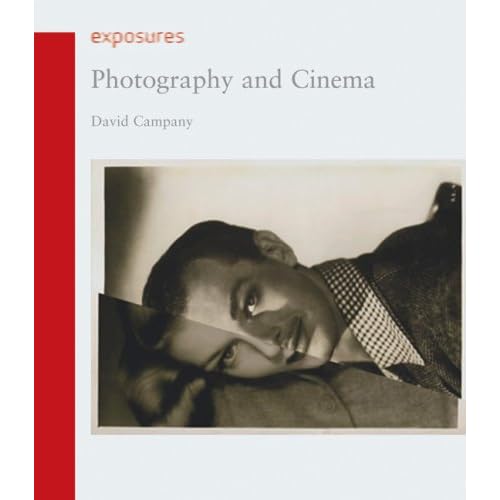Felicity Colman (ed.): Film, Theory, and Philosophy: The Key Thinkers (2009)
Filed under book | Tags: · cinema, film, film history, film theory, philosophy, theory

Thoroughly intertwined, film and philosophy have a complex relationship between thought and perception, time and memory, as well as social, political, and aesthetic experiences. Philosophy has underpinned the creation of cinema while cinema, in turn, has redefined philosophical categories, rethought sex, gender, time and space, and created new concepts that illuminate phenomenology, metaphysics, and epistemology.
An ideal introduction for students, Film, Theory and Philosophy brings together leading scholars to provide a clear, detailed overview of the key thinkers who have shaped the field of film philosophy. From continental philosophers to analytical philosophers, film-makers, film reviewers, sociologists, and cultural theorists, the essays reveal how philosophy can be applied to film analysis and how film can be used to illustrate philosophical problems. But most importantly, the essays explore how cinema has shaped contemporary philosophy and how philosophy has led to a reappraisal of film. This collection will prove an invaluable reference and guide to readers interested in a deeper understanding of the issues and insights presented by the philosophy of film.
Publisher McGill-Queen’s University Press, 2009
ISBN 0773537007, 9780773537002
404 pages
PDF (updated on 2012-7-14)
Comment (0)David Campany: Photography and Cinema (2008)
Filed under book | Tags: · cinema, film, film history, image, photography

What did the arrival of cinema do for photography? How did the moving image change our relation to the still image? Why have cinema and photography been so drawn to each other? Close-ups, freeze frames and the countless portrayals of photographers on screen are signs of cinema’s enduring attraction to the still image. Photo-stories, sequences and staged tableaux speak of the deep influence of cinema on photography.
Photography and Cinema a considers the importance of the still image for filmmakers such as the Lumière brothers, Alfred Hitchcock, Michelangelo Antonioni, Jean-Luc Godard, Chris Marker, Mark Lewis, Agnès Varda, Peter Weir, Christopher Nolan and many others. In parallel it looks at the cinematic in the work of photographers and artists that include Germaine Krull, William Klein, John Baldessari, Jeff Wall, Victor Burgin and Cindy Sherman.
From film stills and flipbooks to slide shows and digital imaging, hybrid visual forms have established an ambiguous realm between motion and stillness. David Campany assembles a missing history in which photography and cinema have been each other’s muse and inspiration for over a century.
Publisher Reaktion Books, 2008
Exposures (London)
ISBN 1861893515, 9781861893512
160 pages
PDF (updated on 2012-7-15)
Comment (0)Anthony Dunne: Hertzian Tales: Electronic Products, Aesthetic Experience, and Critical Design (1999/2005)
Filed under book | Tags: · design, electromagnetism, industrial design, radio, semiotics, technology

“As our everyday social and cultural experiences are increasingly mediated by electronic products—from ‘intelligent’ toasters to iPods—it is the design of these products that shapes our experience of the ‘electrosphere’ in which we live. Designers of electronic products, writes Anthony Dunne in Hertzian Tales, must begin to think more broadly about the aesthetic role of electronic products in everyday life. Industrial design has the potential to enrich our daily lives—to improve the quality of our relationship to the artificial environment of technology, and even, argues Dunne, to be subverted for socially beneficial ends.
The cultural speculations and conceptual design proposals in Hertzian Tales are not utopian visions or blueprints; instead, they embody a critique of present-day practices, ‘mixing criticism with optimism.’ Six essays explore design approaches for developing the aesthetic potential of electronic products outside a commercial context—considering such topics as the post-optimal object and the aesthetics of user-unfriendliness—and five proposals offer commentary in the form of objects, videos, and images. These include ‘Electroclimates,’ animations on an LCD screen that register changes in radio frequency; ‘When Objects Dream…,’ consumer products that “dream” in electromagnetic waves; ‘Thief of Affection,’ which steals radio signals from cardiac pacemakers; ‘Tuneable Cities,’ which uses the car as it drives through overlapping radio environments as an interface of hertzian and physical space; and the ‘Faraday Chair: Negative Radio,’ enclosed in a transparent but radio-opaque shield.
Very little has changed in the world of design since Hertzian Tales was first published by the Royal College of Art in 1999, writes Dunne in his preface to this MIT Press edition: ‘Design is not engaging with the social, cultural, and ethical implications of the technologies it makes so sexy and consumable.’ His project and proposals challenge it to do so.”
Publisher MIT Press, 2005
ISBN 0262042320, 9780262042321
174 pages
PDF (updated on 2012-11-19)
Comment (0)
